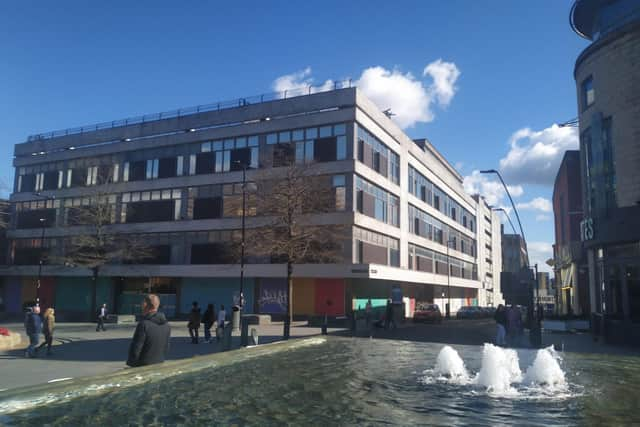Demolition of Sheffield Cole Brothers building would be reckless - Robin Hughes
Far from it: they were on the move. On Friday, 5pm prompt, window displays were dismantled, and soon 900 boxes would travel in a fleet of six vans, pausing only for the Battle of Britain parade, then the Salvation Army band, to pass and repass.
As chandeliers were carefully hand-carried through the streets, an opportunist customer tried to exchange an ill-fitting shirt. Impeded by a jammed goods lift, watched by detectives looking for looters, and fuelled by fish and chips, bubble and squeak and gallons of tea, the Partners of John Lewis – owners of Coles since acquiring Selfridge’s Provincial Stores in 1940 – vacated their inconvenient and much-extended Victorian premises to pioneer a new shopping centre in Barker’s Pool.


Advertisement
Hide AdAdvertisement
Hide AdAnd after two terrible nights in December 1940, only Coles still had such premises. The Blitz reduced Atkinsons, Roberts Brothers, Walsh’s, Cockaynes and the Co-op to smoking ruins, leaving them no option but to rebuild. Coles faced up-to-the-minute, modern stores with all facilities under one roof, all contributing to Sheffield’s growing importance as a regional shopping centre, attracting outsiders by its excellent shopping facilities.
It’s not how we would describe it today; but in those busy post-war decades, Sheffield had ambition, and led the nation in the quality of its civic architecture. Under their visionary City Architect JL Womersley, the council had flung down the innovation gauntlet with developments like Gleadless Valley and Park Hill, and demanded the private sector match them. Coles met the challenge, employing architects of highest calibre, the advance guard of the Modernist movement in Britain: Yorke Rosenberg Mardall.
Modernism had been flourishing on the continent long enough for Hitler to have tried to suppress it, but progress in Britain was slow. Tweed-wearing, pipe-smoking, hot-tempered Englishman FRS Yorke did much to speed this up.
While touring Europe to study this new style, he’d been impressed by the Pensions Institute in Prague, where the architects had persuaded the client to clad the building in costly tiles, by showing how a cheaper alternative exposed to the smoke of the nearby railway station quickly acquired a layer of filth. Slovak architect Eugene Rosenberg worked on that project, having seen the tiles used before when he worked for the legendary Le Corbusier.
Advertisement
Hide AdAdvertisement
Hide AdHe was to make them YRM’s signature, with Coles amongst the first large-scale deployments. By then, David Allford, Sheffield born and educated, was a partner. Who better to work on a building in a location made sensitive by the adjacent War Memorial and City Hall, and make a virtue of the sloping site, a challenge typical of the city?
Coles also demanded daylight. Glass mosaic panels allowed more or fewer windows as needed without spoiling the overall symmetry. Symmetry mattered: YRM required rationality in everything. The building’s proportions were driven by the tiles – it was only half a joke that the architects refused ever to cut a tile to size.
It would also be Sheffield’s most cosmopolitan building. It is no accident that a building by a Sheffielder and a Slovak, their colleague a Swedish Finn (Cyril Mardall), used Belgian tiles, Italian glass mosaic and Spanish granite, and featured a New York-designed interior to impress “what looked like half the population of Sheffield” pouring in on opening day.
Nearly six decades later, the building’s future hangs in the balance. There is reckless talk of demolition; reckless, because almost any building can be retrofitted to be low carbon in use, without the huge carbon emissions of new building to a similar standard, whether on the same site or elsewhere, to replace the lost space.
Advertisement
Hide AdAdvertisement
Hide AdModernism was meant as a rational response to human need. Now there is a new, more urgent need for sustainability: social, economic, and above all environmental.
Eugene Rosenberg attended the building’s opening. Did he mount the car park roof to enjoy the splendid view across the Sheaf Valley? On the hillside opposite, the great cliff of Park Hill would have looked familiar. It too had taken its cue from one of Le Corbusier’s revolutionary designs.
Even before Net Zero Carbon became the watchword, a new vision allowed it to escape destruction. We now have even greater reason for doing the same for Coles.
Robin Hughes is writing on behalf of Hallamshire Historic Buildings and Sheffield Society of Architects.
